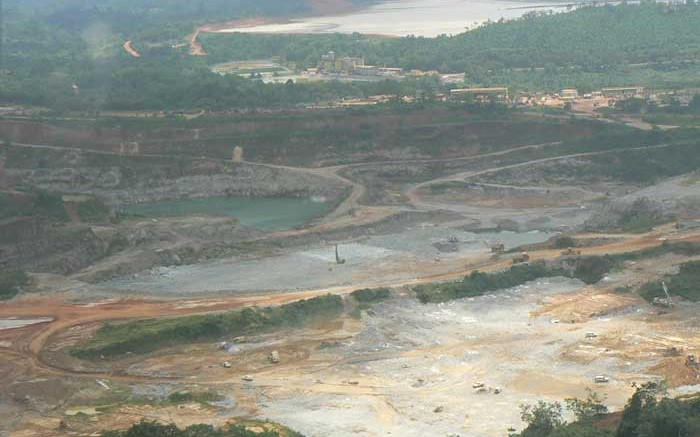VANCOUVER — West Africa-focused gold producer Golden Star Resources (TSX: GSC; NYSE-MKT: GSS) is defining the economics of mining an underground extension to its open-pit Wassa gold mine in southwestern Ghana.
On April 3 the company released results from a 22,000-metre drill program aimed at shoring up gold resources ahead of a preliminary economic assessment (PEA) scheduled for release during the second quarter.
Golden Star is looking to define grades and continuity in gold mineralization below Wassa’s operational open pit, while at the same time drilling along 200-metre fences to chase potential mineralized extensions to the south.
Golden Star released assays from 15 holes over 8,800 metres, which returned positive results on both fronts.
Wassa hosts a carbon-in-leach processing plant with a capacity of 2.7 million tonnes per year. There are two operational pits feeding the plant, including the Wassa Main pit and the Father Brown pit.
Mining is reportedly planned to be complete in Father Brown by the second quarter, by which time mill feed will be supplied from Wassa Main.
The transition has not been a smooth one for Golden Star. During 2013 the company was forced to revise its production guidance downward as the higher-grade Father Brown neared the end of its mine life.
The company reported it would “take time” to access the deeper, higher-grade material at Wassa Main, but expects better results as the year progresses.
In regards to infill drilling below the Wassa Main pit, results appear to represent some resource upside ahead of the PEA. Underground resources at Wassa total 7 million measured and indicated tonnes grading 4.1 grams gold for 900,000 contained oz. Recently released assays have, in some cases, yielded better results compared to previous intercepts.
Highlights from the infill program include: 19.2 metres averaging 11.4 grams gold from 417 metres depth in hole 301; 30 metres of 17.4 grams gold from 435 metres depth in hole 306; and 49 metres grading 3.9 grams gold from 501 metres depth in hole 304.
BMO Capital Markets analyst Andrew Breichmanas — who has an “underperform” stock rating on Golden Star, along with a US61¢-per-share price target — noted that the “infill holes demonstrate the complexity of the system and variability of grades,” while stepout holes supported the mineralization extension and more stepout holes demonstrating potential for extensions by another 200 metres south.
Golden Star reiterated it was on track to deliver its underground PEA during the second quarter. Contractor site visits have been completed, and stope optimization and mine design are in progress. Two drills are operating at Wassa, with assays from six holes over 3,300 metres pending.
Golden Star produced 330,800 oz. gold in 2013 from Wassa and its Bogoso–Prestea mine, which lies 35 km west.
The company finished the year with US$66 million in cash, and expects to produce between 295,000 and 320,000 oz. in 2014.
Golden Star shares have traded within a 52-week window of 39¢ and $1.52, and closed flat after its latest Wassa drill results at 68¢ per share.
The company has 259 million shares outstanding for a $176-million market capitalization.


Be the first to comment on "Golden Star’s drills hit at Wassa ahead of PEA for underground mine"